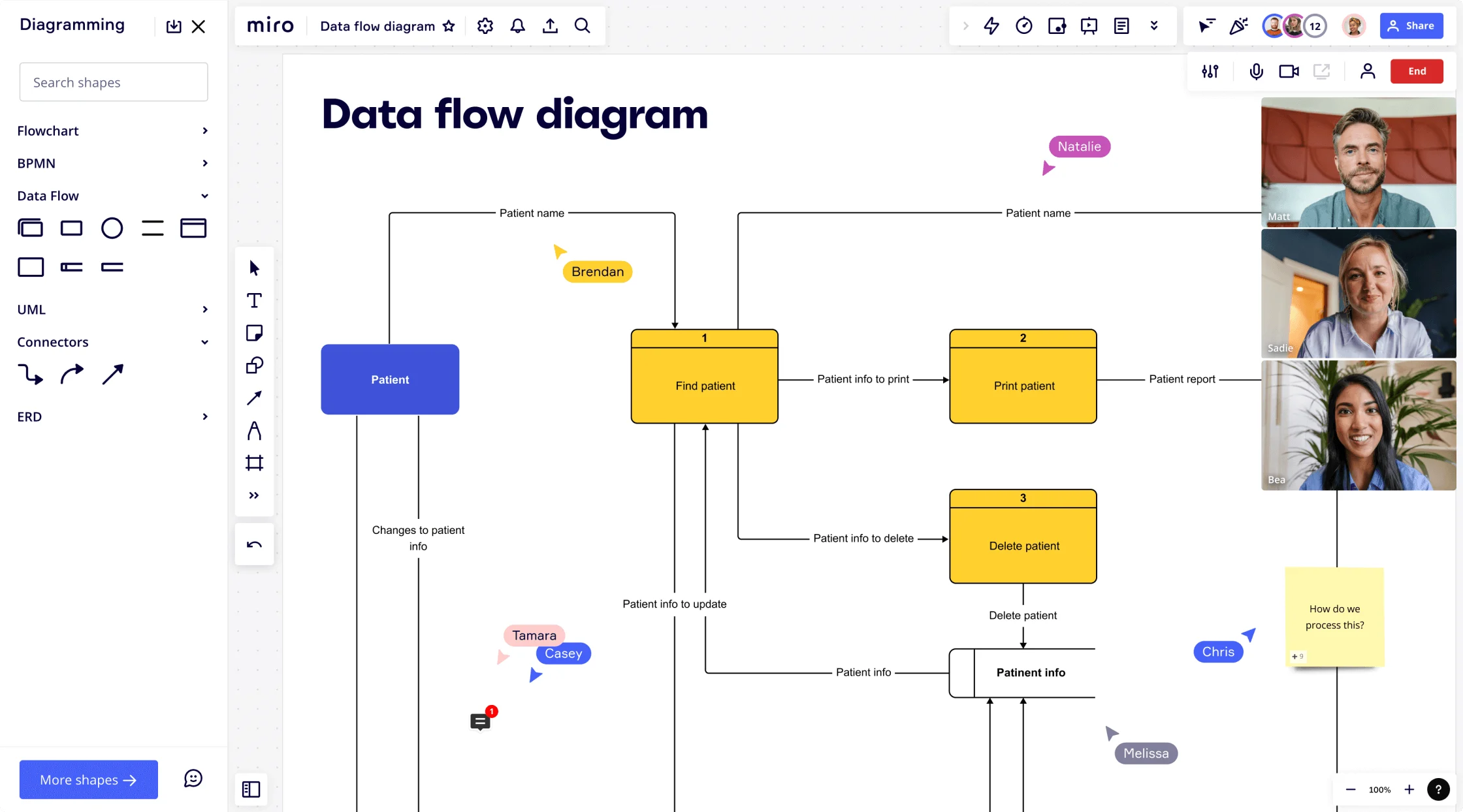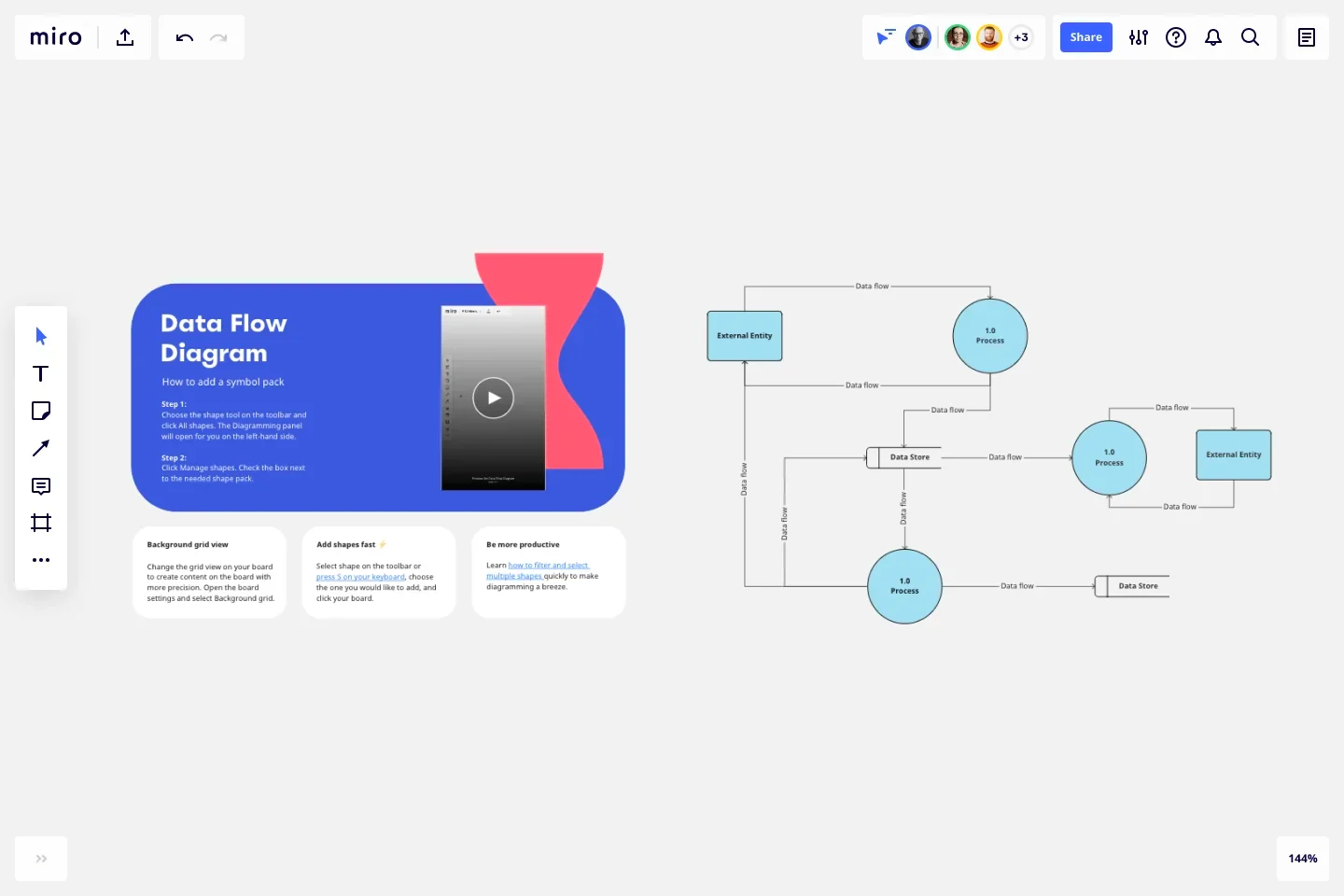
Data flow diagrams (DFDs) serve as a vital tool to understand how data behaves in complex workflows, offering a clear, visual representation of data movement within systems. Let's delve into the world of data flow diagrams, exploring three distinct examples to illustrate their utility and application.
A data flow diagram is more than just a diagram; it's a roadmap of how data travels through a system. It uses standardized symbols and structures to depict the flow, making complex processes easier to understand at a glance. Whether you're a seasoned engineer or a newcomer to the field, understanding how a data flow diagram works can significantly enhance your grasp of system operations.
Consider an online sales platform. Here, data flow is the backbone of operations, from customer orders to inventory management.
This data flow diagram example not only simplifies the understanding of the sales process but also highlights key decision points and data storage locations.
A hospital management system is a complex network of patient data, medical records, and administrative details.
In this example, the data flow diagram showcases the patient's journey from registration to treatment and billing. It's a clear visual guide that helps hospital staff understand how patient information moves through different departments, ensuring efficient and error-free operations.
Inventory control is critical for any business. A well-designed data flow diagram can be the difference between efficient stock management and operational chaos.
This data flow diagram example illustrates how inventory data is collected, processed, and updated. It's a vital tool for identifying bottlenecks and ensuring a smooth supply chain.
Now that you saw real examples of data flow diagrams, let's understand better what are DFDs levels and how do they work.
To effectively capture the complexity and scope of different systems, DFDs are typically structured in multiple levels, each offering a different degree of detail. Understanding these levels is crucial for anyone looking to analyze or design systems using data flow diagrams.
Understanding the different levels of data flow diagrams is essential for effectively mapping out and analyzing systems. Each level serves a specific purpose, from providing a general overview to detailing specific processes, making DFDs a versatile tool for a wide range of applications in system design and analysis.
Every data flow diagram consists of several key components, each represented by specific symbols. These components play a pivotal role in illustrating how data is processed, stored, and transferred within a system:
Understanding these components and their symbols is crucial in creating and interpreting data flow diagrams. By mastering these elements, you can effectively map out and analyze the flow of data in any system, leading to improved system design and process optimization.
Miro's Data Flow Diagram template can help you get quick started with your own DFD. You can build your data flow diagram with shapes, which will visually show the steps or actors of your system, and use the connector lines with arrows to show the flow of your system.

Data flow diagrams are not just diagrams; they are the language of systems and processes. Understanding and utilizing data flow diagram examples in your field can lead to improved efficiency, clearer communication, and better decision-making. Be sure to use a Data Flow Diagram tool to map out and analyze your systems in a visual and clear way.